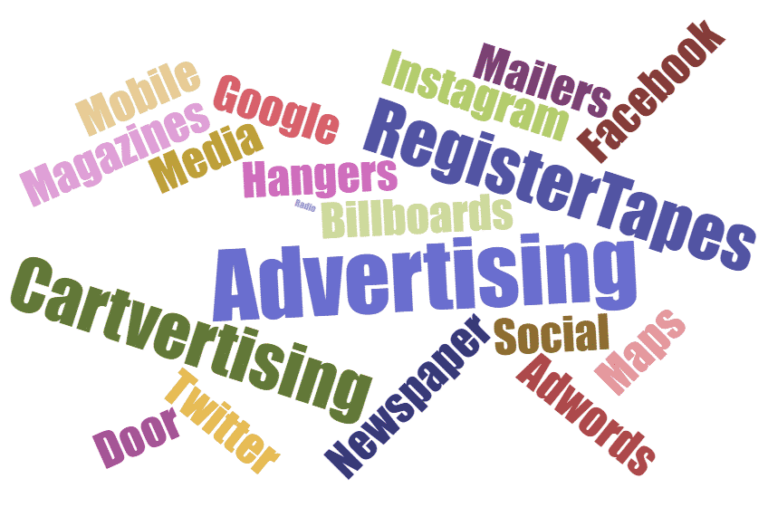Reset Your Marketing Strategy in 5 Minutes
Everyone makes New Year’s Resolutions — so why wouldn’t your business? The New Year is a great opportunity to review the goals you set last year and evaluate whether they are still your main priority. Maybe your business met and surpassed heights you never imagined in years prior, or maybe you’ve found some new ideas to work on. Either way, as you review what did or didn’t work, it’ll be important to consider how your marketing strategy helped manifest your plans.
Was there a successful campaign you’d like to emulate in the future? Did your company set up social media profiles but abandon them once content creation became too exhausting? Think about what successful strategies you want to bring into the new year and what you want to highlight going forward.
If you want to start from scratch, that’s fine. Resetting your marketing strategy is not as difficult as it sounds. Moreover, you often have more to gain by removing the pressure to recreate successful campaigns from the past. Instead, crack down on the key milestones you hope to hit this year and read on for how to hit them.
Learn From Your Competition
If you’re a small business, you have to pay attention to what your competitors are doing. Whether that means carefully watching national chains or keeping up with your neighbors, it’s important to evaluate the advertising strategies you see your competition using. Sure, they probably won’t share all their stats or exactly how successfully their ideas pan out, but by gauging your own reaction to their content, you can easily find new ideas to draw inspiration from.
It’s also important to pay attention to how local competitors are advertising to understand how your community is used to being advertised to. If you live in a small town, it may be less important to secure huge flashy signs, and you’ll likely gain several new customers through word of mouth. Conversely, if you’re in a city, your customers might not even notice your business if you don’t have a bright sign to advertise that you’re still open in the evening. These environmental factors set the stage for specific marketing campaigns, so you should never take them for granted.
Define Your Target Audience
Small businesses need to rely on hyper-local targeting like none other. Where national chains can use a degree of brand-recognition to secure customers from state to state, local stores and restaurants will need to work on building a name for themselves in their community.
As mentioned, “word of mouth” is one of the strongest ways for small businesses to advertise in their community. Positive reviews shared between close friends reveal a greater level of trust, legitimacy, and even intimacy than you could hope to gain through an advertising campaign.
Hyper-Local Targeting
One way to emulate these conversations is to monitor your online reviews and make sure that you address any complaints. Otherwise, don’t be afraid to reach out to your regulars and ask them to leave a review. Relying on the customers that you already know love your business means taking advantage of a key consumer group. These regulars represent a demographic, or community, that have found success in your business. The more you learn about them, the more easily you’ll be able to anticipate where your future customers “eat, work, and play.”
These three concepts are going to be an important key in “targeting” your audience. If you can advertise in the places they already frequent, you’ll be able to situate your business in their daily routine and present your store as just another stop on their schedule. Moreover, by identifying where your competitors are advertising, you may be able to cut the line and hack right into a new consumer base.
Establish a Sales Strategy
Whether you’re cracking down on last year’s strongest campaign or trying to find a new way to move some of your seasonal merchandise — you’re going to need a sales strategy. This idea refers to the process of identifying what you want to advertise, how you want to do so, and where you want to do so.
Try to set a budget for your campaign and calculate the business you anticipate gaining so you can have a better sense of your Return on Investment (ROI) when it comes time to crunch the numbers. This value is one of the best ways to gauge your advertising campaign’s success, especially when advertising a discounted price or promotion.
Of course, you never want to offer a product or service at below cost, but when you run any discount on an item, you’ll want to be able to isolate the sales. That way, you can see how much more of that item was sold than usual, how many other purchases it triggered, and prevent it from skewing your greater totals.
The Easiest Way to Target Locally
Today, one of the best advertising strategies for small businesses is to invest in grocery store advertising. These campaigns allow you to hit thousands of customers every week without any additional labor on your part. Also, because grocery stores pull the majority of their customers from a three-mile radius of the store, you know that your ads will reach your most important customers.
Through campaigns like coupon-receipt advertising, small businesses can print their ads on the backs of grocery store register tape. This means huge savings on print and ink costs for your business and guarantees that your supermarket advertisement goes home in the pocket of every single shopper.
Online advertising may promise thousands of impressions a week, but there’s no way of knowing exactly where those hits are coming from. Even within a national campaign, advertising to customers further out within your state can be a waste of money. It’s difficult to tell whether customers will drive twenty miles into town just to visit your business, so why not greet the customers who are already here?



